- Home
- Alison Weir
Queens of the Conquest Page 8
Queens of the Conquest Read online
Page 8
According to Fulcoius, Matilda was deeply unhappy about losing her child to the cloister. In the poem, he has Cecilia refer to herself as the daughter “of my father and my wholly wretched mother.”7
Cecilia was one of about twenty well-born girls dedicated to God that day, for many barons were eager to follow the example of the Duke and Duchess and offer their daughters with rich dowries. Matilda not only gave land to Holy Trinity, but also purchased estates for it and persuaded others to offer gifts.8 Thus her abbey quickly grew wealthy, and was able to fund watermills, saltworks and the purchase of estates, fishing rights and vineyards.9
—
By midsummer 1066, preparations for the invasion of England were well advanced. Planning for a long absence, William summoned a great assembly of barons and commanded them all to swear homage to his fifteen-year-old son Robert as his heir.10 Robert, for whom Matilda had a special fondness, and who, for now, always did “exactly as his father told him,”11 had grown into a stocky adolescent; he would never achieve a commanding stature, prompting his disappointed father to nickname him “Curthose” in childhood, on account of his short legs. The name stuck. Nevertheless, he was “already a young man of established prowess and proven courage.”12 Not yet of an age to rule the duchy in his father’s absence, he was to be regent in name only, for in August, at the château of Bonneville-sur-Touques, the Duke “entrusted the duchy of Normandy to both his wife Matilda and his young son Robert, leaving God-fearing bishops and warlike lords to help them.”13 In so doing William demonstrated the great confidence he had in Matilda, for it was effectively to her that “the kingdom’s wealth and authority” were delegated,14 and it was she who would act as regent and rule in William’s stead.
It was unusual for a woman of rank to have control of her older sons, but at the same time Matilda was made Robert’s guardian. “First in dignity” on the council of regency William appointed to assist her was the aging Roger de Beaumont,15 capably assisted (until he went to England in 1067) by the wise, prudent and learned Roger of Montgomery, Hugh, Viscount of Avranches, and Ralph of Tancarville, William’s chamberlain, who was to look after the duchy’s finances. All were loyal friends and advisers of the Duke.
By now William had assembled “an immense army of Normans, Flemish, French and Bretons”16 with six thousand horses and his mighty fleet. William of Jumièges claimed that he had 3,000 ships, but modern historians suggest that the number was between 500 and 750. They were anchored in the sheltered bay at the mouth of the River Dives. Here, the Duke solemnly invested Matilda with the regency. In response to Philip I of France, who expressed his concern about the safety of the duchy, he wrote: “By the grace of God, we are blessed with a prudent wife and loving subjects, who will keep our border securely during our absence.”17
Early in September, as William was preparing to depart, he sent to Flanders to ask for military support in his enterprise. But Count Baldwin was in France, acting as regent for his nephew, the young French King. His eldest son, another Baldwin, was not of his father’s mettle, and refused the Duke’s request. Angrily William sent back the retort that Baldwin should expect to receive nothing in spoils, and reminded him that “the honour that the Duke seeks will be for the advantage of your sister and her children, and their greatness will be the advancement of yourself.” When that failed to move the younger Baldwin, the messenger left, declaring, “My lord will conquer England without your help!” Although Baldwin did agree to send a force of men, at a price, the hitherto close bond that had existed between Normandy and Flanders was loosened; and this unpleasant incident presaged a deeper rift to come.
Saddened and mortified though she may have been at the falling-out, Matilda showed herself cheerful and optimistic. She had secretly ordered a great longship to be built “in honour of the Duke”18 and fitted out at her expense, and named it the Mora. The name may have derived from the Greek word for a Spartan military force of six hundred men—the number the ship was built to hold. Matilda’s vessel had striped scarlet sails, painted planking and a gold figurehead of a carved boy, which was said to resemble her young son William; she had directed that one hand should hold an ivory horn to its lips, while the other was to grasp a bow pointing toward England.19 Matilda herself was standing at the prow of this fine vessel as it sailed into the harbor of Dives, much to William’s delighted astonishment.20 He was so impressed with the Mora that he announced she should be his flagship, the one in which he would lead his great enterprise, and on which he would display the Pope’s banner—a gold cross on a silver ground. The Mora is depicted in the Bayeux Tapestry, looking slightly different from contemporary descriptions of her, but it is unlikely that the embroiderers had seen the real ship. In gratitude, William promised Matilda the revenues from the county of Kent, when he was in a position to grant them.21
By 12 September, William had assembled his fleet at Saint-Valéry at the mouth of the Somme.22 It was ready to sail, but bad weather delayed its departure. At last, on 27 September, the wind changed, and he gave orders for embarkation. He said farewell to Matilda, asking if he and his companions might have the benefit of her prayers and those of her ladies.23 She gladly consented, and bade him adieu in good spirits. Then she watched him and his ships sail ever farther into the distance, to England, and the hoped-for crown.
10
“The Splendour of the King”
Matilda returned to Rouen and got on with the business of governing Normandy. It was a challenging task, for the Normans, as William himself said, “when under the rule of a kind but firm master, are a most valiant people. But in other circumstances they bring ruin on themselves by rending each other in pieces. They are eager for rebellion, ripe for tumults, and ready for any sort of crime. They must therefore be restrained by the strong hand of justice.”1 Seemingly never satisfied, “they envied their equals and sought to rival their superiors. They plunder their subjects though they defend them from others. They are faithful to their lords, though a slight offence renders them perfidious. They weigh treachery by its chance of success.”2
Matilda ruled the turbulent duchy and presided over her viceregal court with great prudence, wisdom, assurance and skill. William of Poitiers conceded that the government was “carried on smoothly by our lady Matilda, a woman of masculine wisdom,” but the fact that there had been no revolts “must, we think, be attributed primarily to the king himself, whose return they feared.”3 Yet Matilda’s own wise statesmanship was undoubtedly responsible to a degree. She was “liberal of mind” and gifted with great abilities that equipped her for the task.4 A statue of her in the Luxembourg Gardens in Paris, by Jean-Jacques Elshoecht, dates only from 1850, but depicts her holding a sword, symbolic of the power she wielded in Normandy.
In the main she acted independently of Robert, confirming grants by herself in William’s name.5 Nevertheless, their association in the regency may well have strengthened the bond between mother and son.6
—
When, in October, she heard of William’s victory at Hastings, a jubilant Matilda returned joyful thanks to God, and promptly renamed the priory of Notre-Dame de Pré “Notre-Dame de Bonnes Nouvelles”—Our Lady of Good News.7 Over the next weeks, she expressed her gratitude in lavish gifts to religious houses. “The alms which this princess daily distributed with such zeal brought more succour than I can express to her husband, struggling on the field of battle.”8 By December, she had begun styling herself “Queen of England,” even though she had not been crowned.9
William had left her pregnant. According to the contemporary humanist Godfrey, Archbishop of Rheims, God granted William the victory at Hastings so that the child, Adela, might have “fully royal blood,”10 so she was probably born soon after 14 October 1066, when he became king of England, and before June 1067. Godfrey went on:
The Duke’s child would rise to become an excellent woman,
The goddess did not think it sufficient for her to be of ducal status.
The royal vi
rgin obtained by fate that her father would be a king.
In order for Adela to be the daughter of a king,
The Fates allowed the father to establish himself as a king.
Because the virgin was not allowed to leave the womb,
Her father owed the kingdom of England to her.11
Adela was probably named for her grandmother, Adela, Countess of Flanders.
—
Hastings did not immediately make William a king. He had to fight for his crown. The Saxons did not give up without a fight: they were a proud people with their own customs and laws, the descendants of Germanic tribes who had crossed to England centuries before and subdued or driven westward the indigenous Romano-British population. The invading Duke and his followers were the kinfolk of Viking marauders who had subjected England to centuries of raiding and destruction. One prayer of intercession read: “Free us, oh God, by preserving our bodies and those in our keeping from the cruel Norse people who ravage our realms.” But the Vikings had settled and colonized vast swathes of northern and eastern England, which were known as the Danelaw. For fear of further incursions from Scandinavia, English kings would wield a tax known as Danegeld for the defense of the realm until 1162. Thus the Norman invasion was fiercely resisted.
William was determined to make England his. He seized England’s capital, Winchester, and marched on London, leaving a trail of devastation in his wake as he crushed his opponents. In London, the Witan had chosen the child Edgar Atheling as their monarch, since he had a better claim than either William or Harold; but William, by a show of force, overcame their objections, and on Christmas Day 1066, they elected him king. Immediately afterward, he went to his coronation in Edward the Confessor’s newly built Westminster Abbey, then a fine Romanesque church occupying much the same position as the present abbey, which was rebuilt in the thirteenth and fourteenth centuries.12
The coronation ceremony has its roots in biblical times and remains one of the oldest institutions of government. The ritual of coronation sets a king or queen apart from the people. It is an investiture with crown and regalia, the symbols of office—and an ordination. The monks of Westminster wanted William to use Edward the Confessor’s regalia, which they held in safekeeping. It consisted of a crown, scepter, rod, chalice, paten, cross and royal robes,13 and they claimed the Confessor had directed that it be used at all future coronations. But William had already commissioned a new crown for himself, of gold set with precious stones and a circle of pearls, supposedly like that of King Solomon.14 Like Anglo-Saxon crowns, Norman ones were modeled on examples from antiquity.15
He had wanted to wait; he had said that, “if God granted him the honour” of conquering England, “he wished for his wife to be crowned with him,” but his barons urged him to consolidate his position at once.16 His coronation, which used the form of service drawn up in 973 by St. Dunstan for King Edgar, set a precedent for his successors to be crowned in Westminster Abbey, thus linking them spiritually to the half-Norman Confessor. The singing of the triumphant hymn Laudes Regiae, with its Imperial acclamations, harked back to the coronation of the Emperor Charlemagne in 800. It had been sung at the coronations of French kings ever since, and William established a precedent that would be followed at English coronations until the Reformation.17
When William was crowned, he was acclaimed in both Norman French and English, so that his new subjects could understand what was happening. But his Norman lords shouted their acclamation so loudly that the soldiers keeping control over the crowds outside the abbey feared that a riot had broken out, and even that William was being assassinated. They set fire to nearby houses in order to make the people take fright and scatter, but several deaths ensued. As smoke filled the abbey and those inside poured out to see what was happening, the frightened bishops hastened to complete the consecration of the new King, who was trembling from head to foot with anger.18 The English, it was said, never trusted the Normans again.
—
William returned to Normandy in February 1067, after an absence of five months, and in March was reunited with Matilda and their children, including, perhaps, the newborn Adela, at the abbey of Fécamp near the coast.19 “His ship had come home.”20 It was the tradition of the Norman rulers to hold ceremonial courts at Easter, Christmas and other festivals of the Church, at which they wore their crowns, and at Easter that year, William and Matilda held a magnificent court for the first time together as king and queen, in the great hall of the château of Fécamp, and celebrated his victory with much magnificence and the singing of the Laudes Regiae.21 The château had been built in the French Carolingian style by William’s ancestor Duke William “Longsword” in 932, and rebuilt in stone by Dukes Richard I and Richard II.22
The King had brought with him Edgar Atheling and two prominent English earls, the brothers Edwin of Mercia and Morcar of Northumbria, who had been enemies of the Godwins. It was at this time that William betrothed one of his daughters to Edwin of Mercia, whose sister Edith had been married to King Harold. It was not Agatha,23 but could have been Constance, Matilda or even the newly born Adela.
The Normans were surprised to see the English nobles, “these sons of the north, wearing their hair long,” as beautiful as girls. They marveled at “the finely woven, gold-encrusted garments of the King and his companions, the vessels of gold and silver. At a great banquet they drank only from such goblets, or from horns of wild oxen decorated with the same metal at both ends. They noted many such things fitting the magnificence of a king, but they recognised that, far more distinguished and memorable than these things, was the splendour of the King himself.”24
As William and Matilda made a triumphal progress to Rouen, the whole duchy celebrated, with even the bishops breaking the Lenten fast.25 It was still “a time of winter and of the austere Lenten penances. Nevertheless, everywhere celebrations were held as if it were a time of high festival. The sun seemed to shine with the clear brightness of summer. The inhabitants of humble or remote places flocked to the towns or anywhere else where there was a chance of seeing the King. When he entered his metropolitan city of Rouen, old men, boys, matrons and all the citizens came out to see him. They shouted out to welcome his return, so that you could have thought the whole city was cheering. Monks and clerks vied with each other to show the greatest deference at the arrival of their beloved protector.”26
On 1 July, William—and probably Matilda—attended the consecration of the Benedictine abbey of Jumièges,27 one of the great bastions of Norman Church reform. Tradition has it that at this time the King and Queen also visited the abbey of Montvilliers, founded in 685, to see how progress was being made with the construction of a new church, begun in 1065.
A lurid legend, dating from no earlier than the fourteenth century, asserted that, as soon as he arrived in Normandy, William discovered that his finances were in disarray, and sent for his steward, Grimoult de Plessis, whom he had appointed to assist Matilda in the regency, demanding that he account for the shortfall. Grimoult had secretly fallen in love with the Queen, but she had rejected his advances. Now, to preempt her accusations, he had his revenge. He blamed her for squandering William’s wealth; he also accused her of committing adultery. This gave rise to yet another tale of an enraged William ill treating Matilda, for he is said to have ordered that she be divested of her robes, tied by her hair to a horse’s tail, and dragged naked through the streets of Caen, as the terrified citizens hid themselves behind barred doors. As she suffered this violence, Matilda, chilled to the bone, cried out, “My God, the cold street!” This is said to have been the origin of the name of the rue Froide—Cold Street. Le Croix Pleureuse (the Crying Cross) in the rue de Falaise marked the spot where Matilda was supposedly dragged along the street by an enraged William.28
After this ordeal, according to the tale, William had her thrown into a dungeon in the château. But then he was plunged into doubts about her guilt. Disguising himself as a priest, he heard her confession, in which sh
e affirmed her innocence and revealed the truth about her accuser, whereupon William threw back his hood and flung himself weeping into her arms.
When Grimoult heard that his villainy was exposed, he fled to Plessis, but William gathered a posse of horsemen and rode swiftly in pursuit, seizing him, hanging him by the feet from a tree, and skinning him alive with a wooden knife. Finding that he was still alive, the King and his men tied his limbs to four wild horses, who tore him apart. It was claimed that William made a saddle from Grimoult’s skin and rode on it back to Caen. Later, as penance, he is supposed to have founded the Chapelle-au-Cornu (the Corps Nu, which refers to the naked body of Grimoult) at Montchauvet. It is now a ruin.29
There is no basis to the tale. The real Grimoult de Plessis had been among those who had defied William at Val-ès-Dunes in 1047. Imprisoned at Rouen, he had probably been strangled in his dungeon before being buried in chains as a traitor.
The legend is echoed in a tale from the eighteenth century, recounted by J. R. Planché in 1874, of how Matilda discovered that William was betraying her with two novices from the abbey of Saint-Léger-de-Préaux (where, probably, their daughter Adeliza was a nun). She sent soldiers to seize the girls, but William drove them off, slaying or scattering them. When he learned that Matilda had sent them, he had her dragged at the horse’s tail through Caen.30
—
The autumn of 1067 brought tragic news for Matilda. Her father, Count Baldwin, died on 1 September, and was succeeded by her brother, now Baldwin VI. “For all her powerful government and her resources vast, she was plunged into the deepest affliction by the death of her father and her mother’s bereavement.”31 Effectively, she suffered a double loss, for soon after being widowed, the Countess Adela departed for Rome to be veiled as a nun by Pope Alexander II, then retired to the Benedictine abbey of Notre-Dame de Messines near Ypres, which she had founded in 1057 for thirty noble maidens and twelve canons.

 Richard III and the Princes in the Tower
Richard III and the Princes in the Tower Britain's Royal Families: The Complete Genealogy
Britain's Royal Families: The Complete Genealogy The Lady in the Tower: The Fall of Anne Boleyn
The Lady in the Tower: The Fall of Anne Boleyn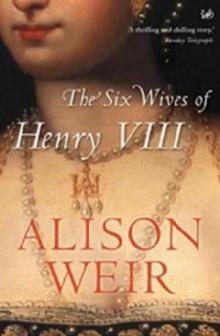 Six Wives of Henry VIII
Six Wives of Henry VIII Elizabeth of York: A Tudor Queen and Her World
Elizabeth of York: A Tudor Queen and Her World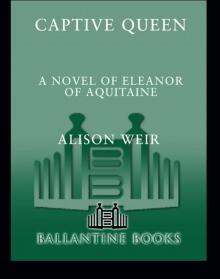 Captive Queen
Captive Queen Innocent Traitor
Innocent Traitor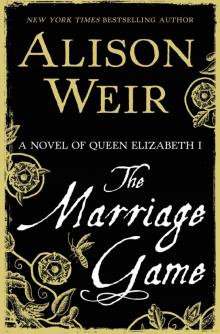 The Marriage Game
The Marriage Game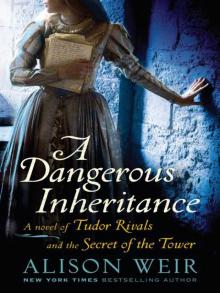 A Dangerous Inheritance
A Dangerous Inheritance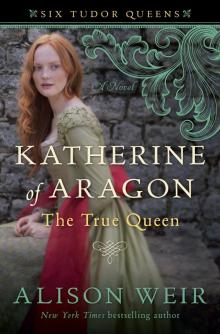 Katherine of Aragón: The True Queen
Katherine of Aragón: The True Queen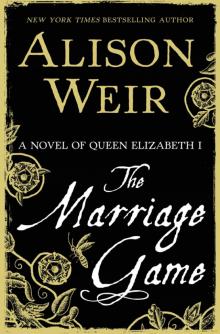 The Marriage Game: A Novel of Queen Elizabeth I
The Marriage Game: A Novel of Queen Elizabeth I Princes in the Tower
Princes in the Tower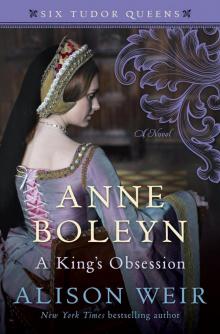 Anne Boleyn: A King's Obsession
Anne Boleyn: A King's Obsession Traitors of the Tower
Traitors of the Tower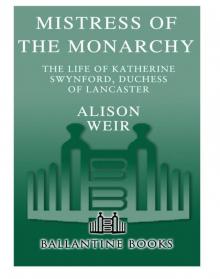 Mistress of the Monarchy: The Life of Katherine Swynford, Duchess of Lancaster
Mistress of the Monarchy: The Life of Katherine Swynford, Duchess of Lancaster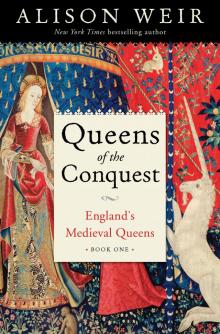 Queens of the Conquest: England’s Medieval Queens
Queens of the Conquest: England’s Medieval Queens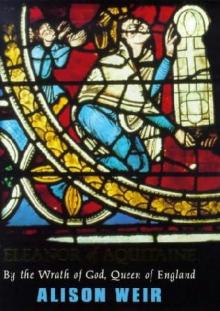 Eleanor of Aquitaine: A Life
Eleanor of Aquitaine: A Life Mary, Queen of Scots, and the Murder of Lord Darnley
Mary, Queen of Scots, and the Murder of Lord Darnley Henry VIII: The King and His Court
Henry VIII: The King and His Court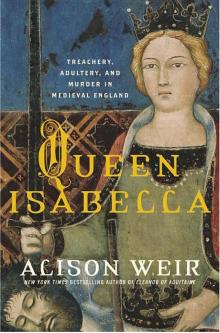 Queen Isabella: Treachery, Adultery, and Murder in Medieval England
Queen Isabella: Treachery, Adultery, and Murder in Medieval England Katheryn Howard, the Scandalous Queen
Katheryn Howard, the Scandalous Queen Arthur- Prince of the Roses
Arthur- Prince of the Roses The Wars of the Roses
The Wars of the Roses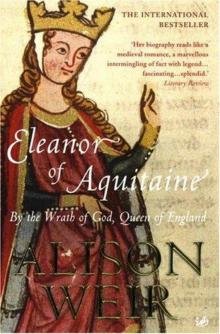 Eleanor of Aquitaine: By the Wrath of God, Queen of England
Eleanor of Aquitaine: By the Wrath of God, Queen of England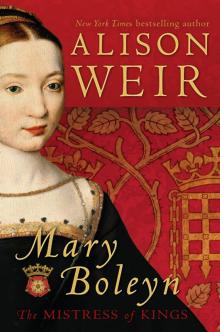 Mary Boleyn: The Great and Infamous Whore
Mary Boleyn: The Great and Infamous Whore Jane Seymour: The Haunted Queen
Jane Seymour: The Haunted Queen Anna of Kleve, the Princess in the Portrait
Anna of Kleve, the Princess in the Portrait Lancaster and York: The Wars of the Roses
Lancaster and York: The Wars of the Roses The Grandmother's Tale
The Grandmother's Tale The Princess of Scotland (Six Tudor Queens #5.5)
The Princess of Scotland (Six Tudor Queens #5.5) The Lady Elizabeth
The Lady Elizabeth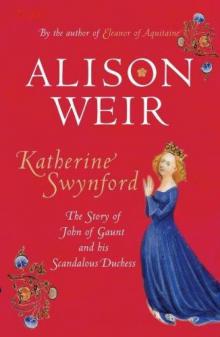 Katherine Swynford: The Story of John of Gaunt and His Scandalous Duchess
Katherine Swynford: The Story of John of Gaunt and His Scandalous Duchess The Curse of the Hungerfords
The Curse of the Hungerfords The Lost Tudor Princess: The Life of Lady Margaret Douglas
The Lost Tudor Princess: The Life of Lady Margaret Douglas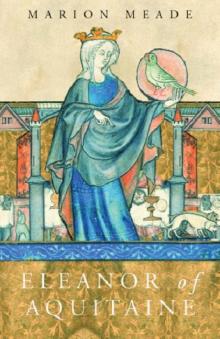 Eleanor of Aquitaine
Eleanor of Aquitaine Mistress of the Monarchy
Mistress of the Monarchy The Lost Tudor Princess
The Lost Tudor Princess Henry VIII
Henry VIII Anne Boleyn, a King's Obsession
Anne Boleyn, a King's Obsession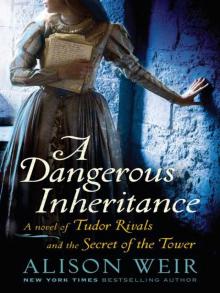 A Dangerous Inheritance: A Novel of Tudor Rivals and the Secret of the Tower
A Dangerous Inheritance: A Novel of Tudor Rivals and the Secret of the Tower Elizabeth of York
Elizabeth of York Katherine of Aragon, the True Queen
Katherine of Aragon, the True Queen Katherine Swynford
Katherine Swynford Wars of the Roses
Wars of the Roses Queens of the Conquest
Queens of the Conquest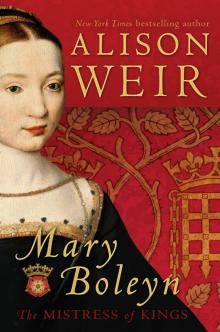 Mary Boleyn
Mary Boleyn Britain's Royal Families
Britain's Royal Families The Tower Is Full of Ghosts Today
The Tower Is Full of Ghosts Today Life of Elizabeth I
Life of Elizabeth I Anne Boleyn A King's Obssession
Anne Boleyn A King's Obssession Lancaster and York
Lancaster and York Jane Seymour, the Haunted Queen
Jane Seymour, the Haunted Queen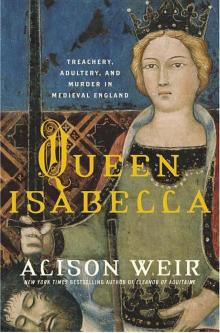 Queen Isabella
Queen Isabella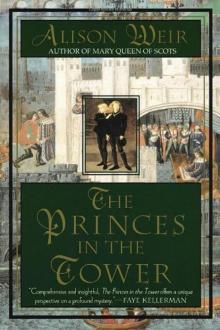 The princes in the tower
The princes in the tower